Quick Start
What is respond.io?
Setting Up an Account
Connecting Channels
Inviting Your Teammates
Getting Contacts to Message You
Automated Welcome and Away Messages
Responding to Messages
Glossary of Terms
Channels
WhatsApp Business Platform (API) Quick Start
Getting Ready for Inbound Conversations
Getting Ready for Promotional Messaging
WhatsApp Official Business Account (Blue Tick)
Grow your WhatsApp Audience by Maximizing Entry Points
Get WhatsApp API Account for Government Agencies
WhatsApp Business Calling API
Meta Business Verification
WhatsApp Message Templates
WhatsApp Pricing
WhatsApp Business Platform (API) Channel Configuration
WhatsApp Messaging Limits
Meta Product Catalog
Change Your WhatsApp Business Display Name
Migrating from WhatsApp Personal or WhatsApp Business App
Phone Number Migration to respond.io WhatsApp Business Platform (API)
Turn-off WhatsApp Number Two-Step Verification
WhatsApp Cloud API
360dialog WhatsApp
Twilio WhatsApp
MessageBird WhatsApp
Vonage WhatsApp
Phone Number Migration to WhatsApp Cloud API
TikTok
Facebook Messenger
Facebook Messenger Overview
Facebook Messenger Quick Start
Facebook Chat Plugin
Facebook Private Replies
Facebook Message Tag
LINE
Viber
Telegram
Website Chat Widget
Website Chat Widget Overview
Website Chat Widget Quick Start
Install Website Chat Widget on WordPress
Install Website Chat Widget on Shopify
Install Website Chat Widget on Wix
Install Website Chat Widget on Joomla
Install Website Chat Widget on Squarespace
SMS
Custom Channel
Product
Dashboard & Reporting
Dashboard
Reports Overview
Reports: Conversations
Reports: Responses
Reports: Resolutions
Reports: Messages
Reports: Contacts
Reports: Assignments
Reports: Leaderboard
Reports: Users
Reports: Broadcasts
Inbox
Inbox Overview
Assignment and Closing a Conversation
Custom Inboxes
Interacting with Respond AI Prompts
Using AI Assist
Contacts
Broadcasts Module
Workflows
Workflows Overview
Workflow Triggers
Workflow Steps Overview
Step: AI Agent
Step: Send a Message
Step: Ask a Question
Step: Assign To
Step: Branch
Step: Update Contact Tag
Step: Update Contact Field
Step: Open Conversation
Step: Close Conversation
Step: Add Comment
Step: Jump To
Step: Date & Time
Step: Wait
Step: Trigger Another Workflow
Step: HTTP Request
Step: Add Google Sheets Row
Step: Send TikTok Lower Funnel Event
How to Avoid Workflow Loops
Step: Update Lifecycle
Step: Send Conversions API Event
Dynamic Variables
Workspace Settings
Managing a Workspace
General info (previously General)
User settings (previously Users)
Teams (previously Team Settings)
Channels
Growth Widgets
Contact Fields
Integrations
Respond AI
Closing Notes
Snippets
Tags
Files
Data Export
Contact Import
Lifecycle
Organization Settings
Organization Overview
Account info (previously General)
Admin Settings (previously Users)
Workspaces
WhatsApp Fees
Billing & Usage
Security
User Account
Mobile App
Installing respond.io Mobile App
Messaging From Your Mobile
Managing Notifications On Your Mobile
Configuring mobile app settings
Help Menu
Conversation Led Growth
Capture Leads
How to Collect Contacts’ Emails and Phone Numbers
How to Route Contacts from CTC Ads to Agents
How to Send Outbound Sales Messages
How to Track Conversation Source from Multiple Websites
How to Enrich Customer Data from a CRM or other Business Software
Convert Leads
How to Automate Product Info Sharing in Conversations Initiated via CTC Ads
How to Automatically Qualify Contacts Based on Budget Using AI Agent
Assignment Strategy: How to Automate Contact Distribution & Load Balancing
How to Maximize Customer Service Potential with AI Agent
How to Automate Contact Information Collection with AI
How to Block Contacts and Manage Spam
How to Create Automated Welcome and Away Messages
How to Create Automated Chat Menus
How to Route Contacts to Preferred AI Agent
How to Route Contacts by their Preferred Language
How to Route Contacts by Team Functions
How to Route Contacts by Shifts
Assignment Strategy: How to Unassign Agents after Conversations Closed
How to Get Contacts’ Consent for Personal Data Collection
How to Promptly Transfer Conversation Between Agents
How to Guide Customers from Exploration to Purchase with Engaging Menus
How to Optimize Customer Onboarding with Automated & Customized Welcome Messages
How to Streamline Meeting Scheduling via CTC Ads
How to Get a Complete View of the Customers
How to Simplify Customer Escalation with Automation
How to Transfer Contacts to the Next Shift Automatically
How to Optimize Agents’ Productivity in the Inbox Module
How to Write an Optimal AI Persona (Best Practices)
How to Write the Best Knowledge Sources for AI Agents
How to Align AI Conversations with Your Brand Voice
How to Draft Customer Replies with AI
How to Convert Image to Text Using AI
How to Automate Calculations Using AI
How to Automate Lifecycle Tracking in Google Sheets
Retain Customers
How to Route New and Returning Contacts
How to Route VIP Contacts
How to Send CSAT to Customer and Save Data in Google Sheets or CRMs
How to Send Outbound Support Messages
How to improve lead targeting and automatically send purchase events to Meta when a customer makes a payment
Reporting and Analytics
Broadcasts Use Cases
How to Send a Simple Broadcast
How to Start a Workflow Based on Broadcast Response
How to Import to Broadcast via WhatsApp
How to Troubleshoot a Failed Broadcast
Integrations
Dialogflow
Dialogflow Overview
Dialogflow: Connecting to Dialogflow
Dialogflow: Creating a Chatbot
Dialogflow: Managing Intents
Dialogflow: Parameters
Dialogflow: Events
Dialogflow: Response Templates
Dialogflow: Custom Payloads
Dialogflow: Fulfillment Webhook Request
Zapier
E-Commerce Integration: Shopify
E-Commerce Integration: BigCommerce
E-Commerce Integration: WooCommerce
E-Commerce Integration: Magento
CRM Integration: HubSpot
CRM Integration: Salesforce
CRM Integration: Pipedrive
CRM Integration: ActiveCampaign
Zapier
Make
Meta Business Accounts
TikTok Messaging Ads Integration
Developer API
HubSpot
Webhooks
Salesforce
Table of Contents
- Home
- Integrations
- Dialogflow
- Dialogflow: Connecting to Dialogflow
Dialogflow: Connecting to Dialogflow
How to Build a Chatbot with Dialogflow
How to Use respond.io as a Dialogflow CRM
Connecting Dialogflow to respond.io is simple as you will only need to retrieve a JSON file from Dialogflow and upload it to respond.io platform.
Video Tutorial
This video guide will take you through generating and retrieving the Google Service Account Key (a JSON file) from your Dialogflow Agent and uploading it respond.io platform.
Setting Up Dialogflow
In order to set up Dialogflow, we will need to do the following:
Getting a Dialogflow Account
Step 1: Navigate to this page and proceed to login with your Google account.
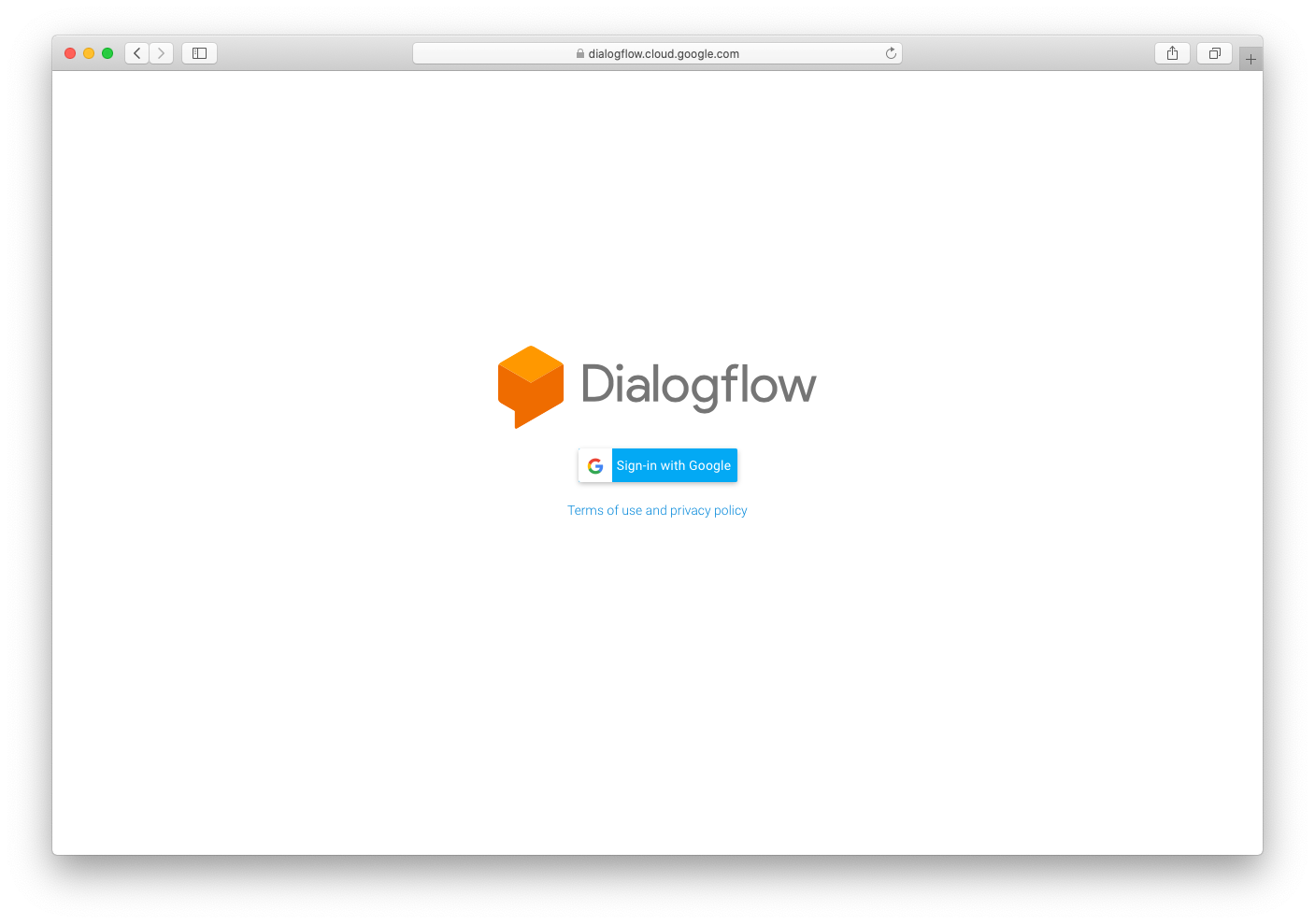
Step 2: Review the terms and check the box. Click Accept to proceed.
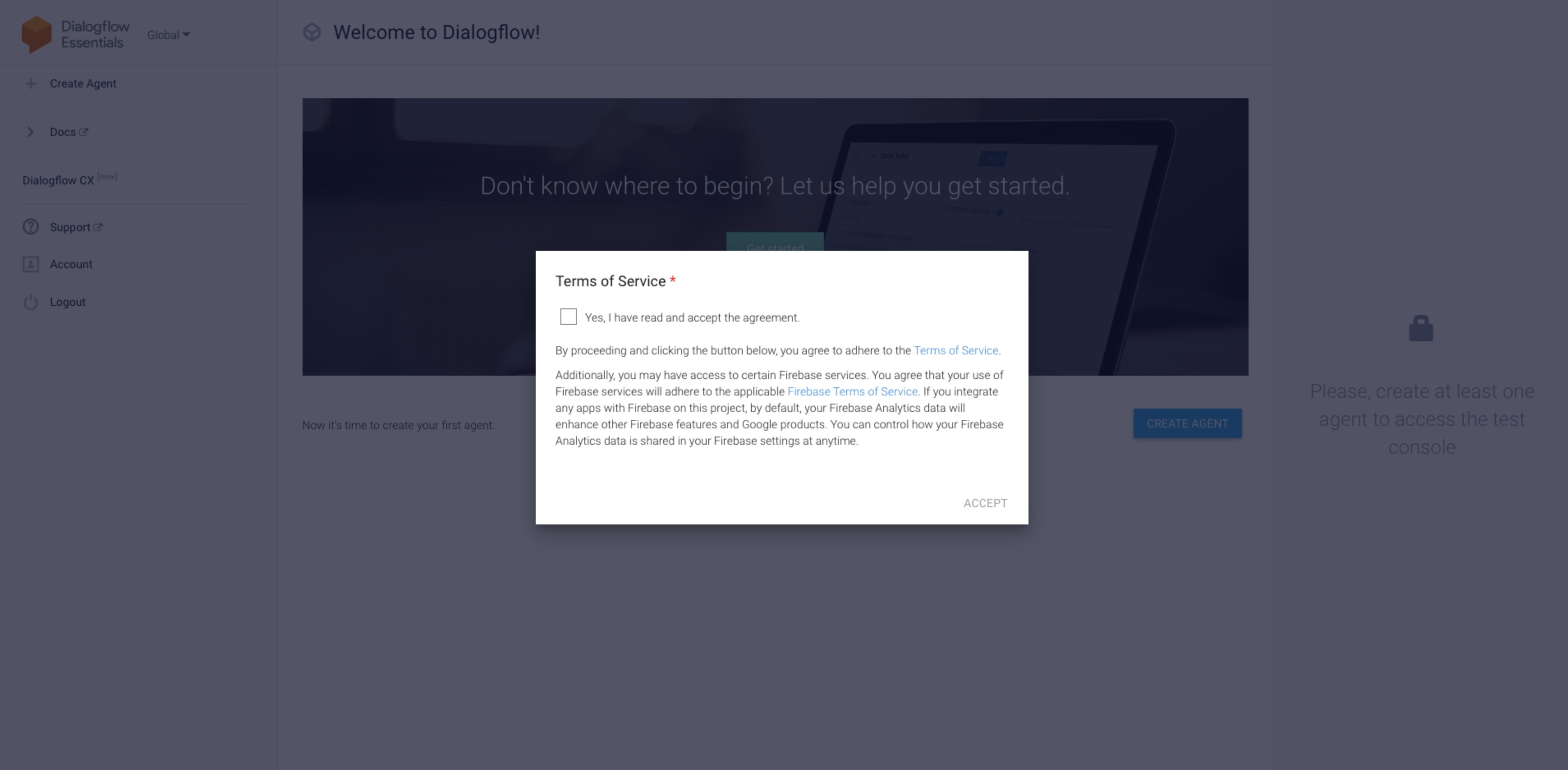
Creating a Dialogflow Agent
In Dialogflow, there is a module named Agent that acts as the brain of your bot. This component will help your bot understand and classify human languages.
Step 1: Once you have logged in, click the dropdown arrow and click Create new agent at the side navigation menu.
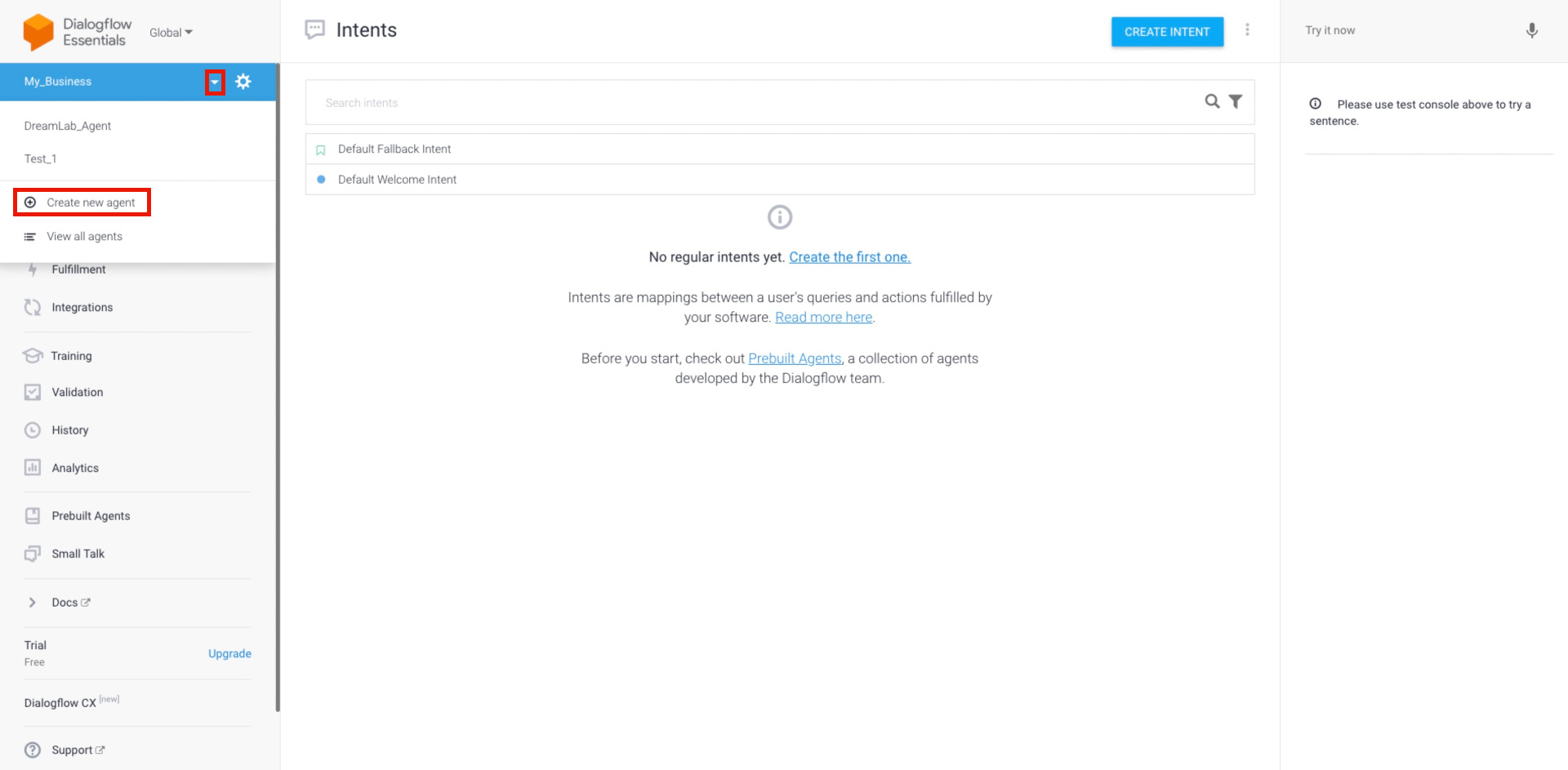
Step 2: Give the agent a name for internal reference. Make any necessary changes to the default settings.
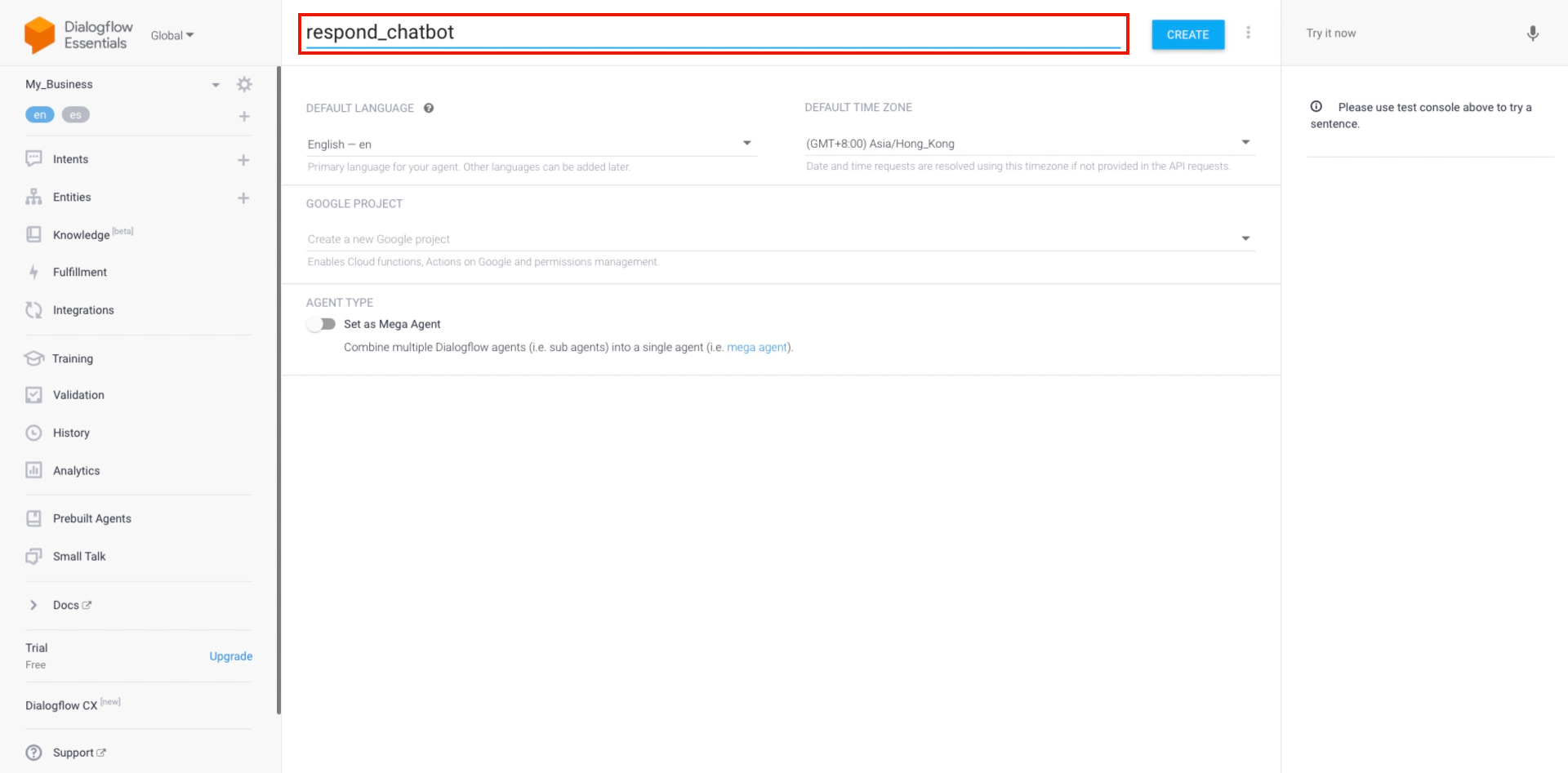
Fields | Description |
Name | For identification purposes. This name will be used for internal reference only. |
Language | The language to be used for Dialogflow's natural language processes. Choose the language of your target audience. |
Timezone | The timezone to be adopted for analytics purposes on Dialogflow. |
Step 3: When you are ready, click CREATE to create the agent.
Connecting to Dialogflow
Connecting Dialogflow to the respond.io platform is simple as you will only need to retrieve a JSON file from Dialogflow and upload it to the respond.io platform.
Step 1: Login using your Google account that is associated with Dialogflow.
Step 2: Navigate to the Settings module by clicking the ⚙ icon beside the Agents dropdown menu.
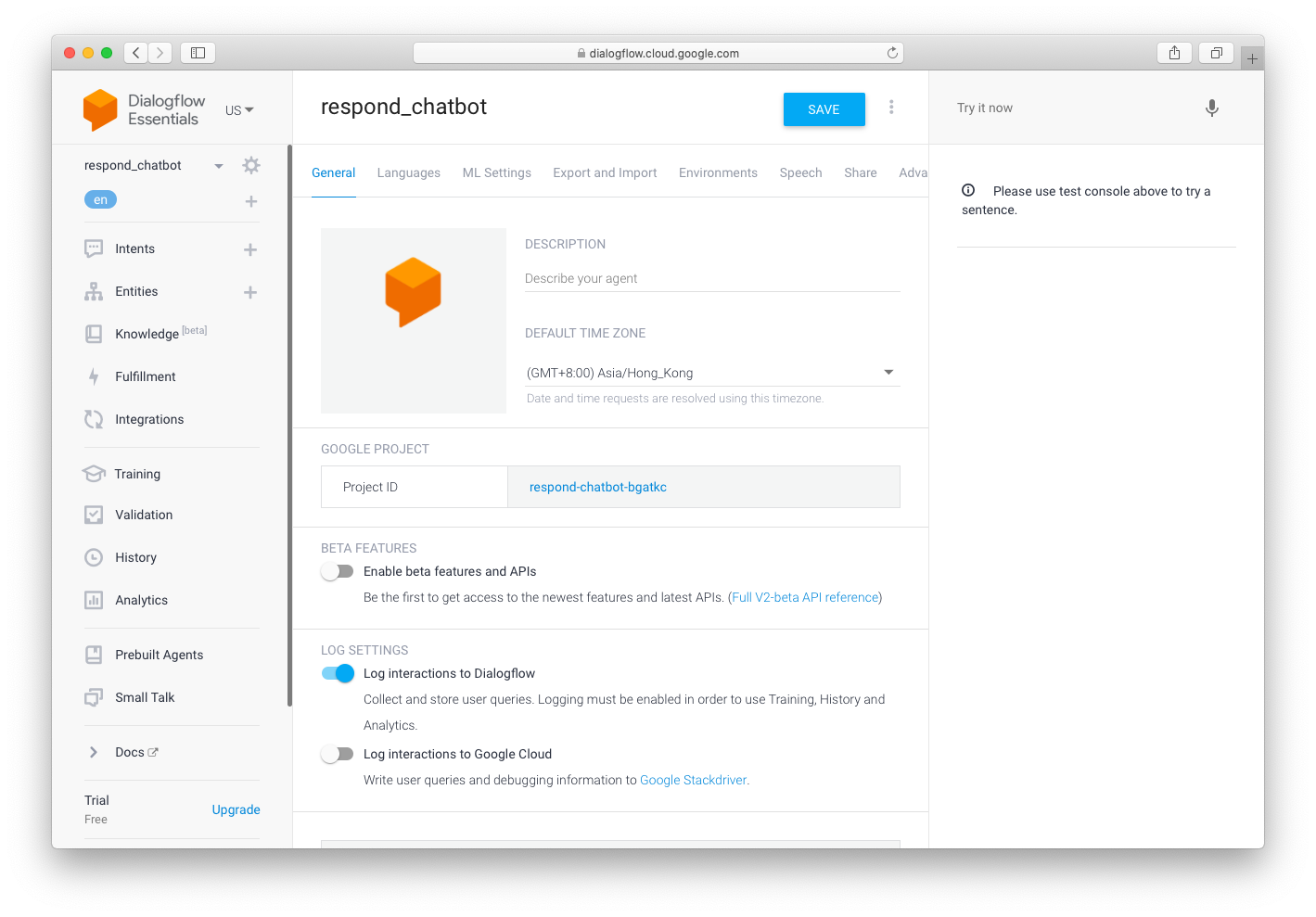
Step 3: In the General tab, click the link in the Service Account to view the associated Google Project.
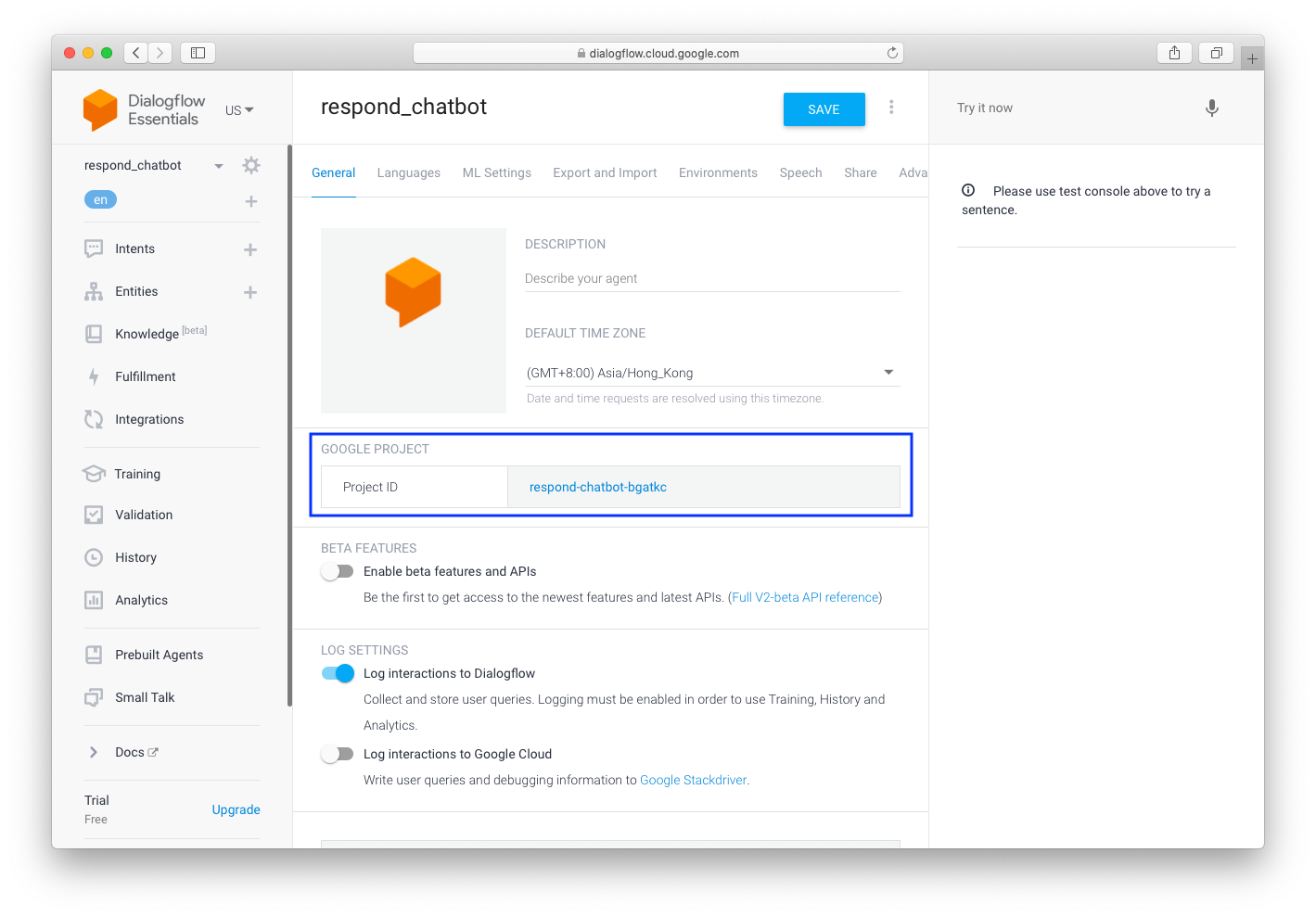
Step 4: With the Google Project open, click Go to project setting.
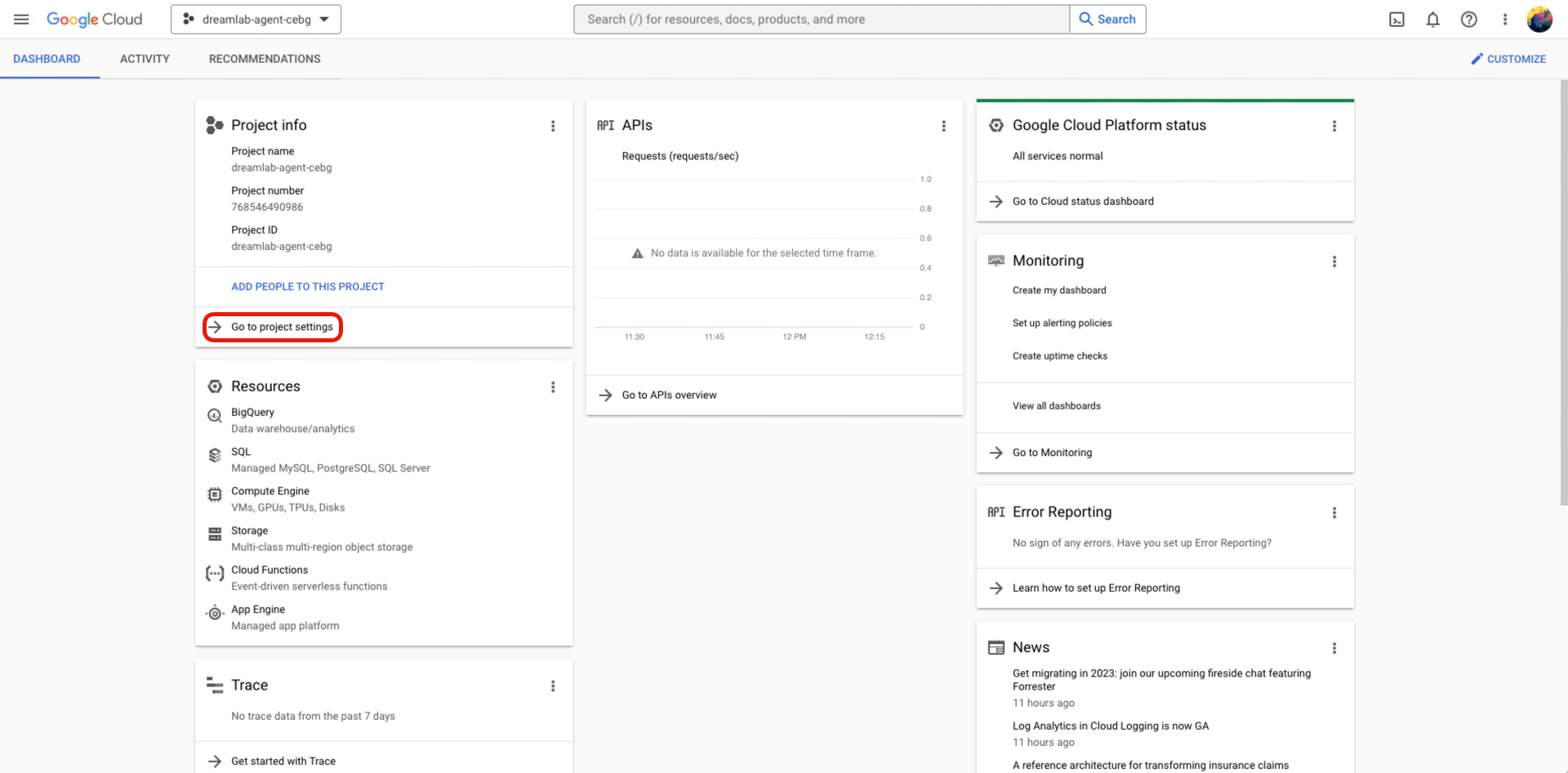
Step 5: In the IAM & Admin menu > Select Service Accounts
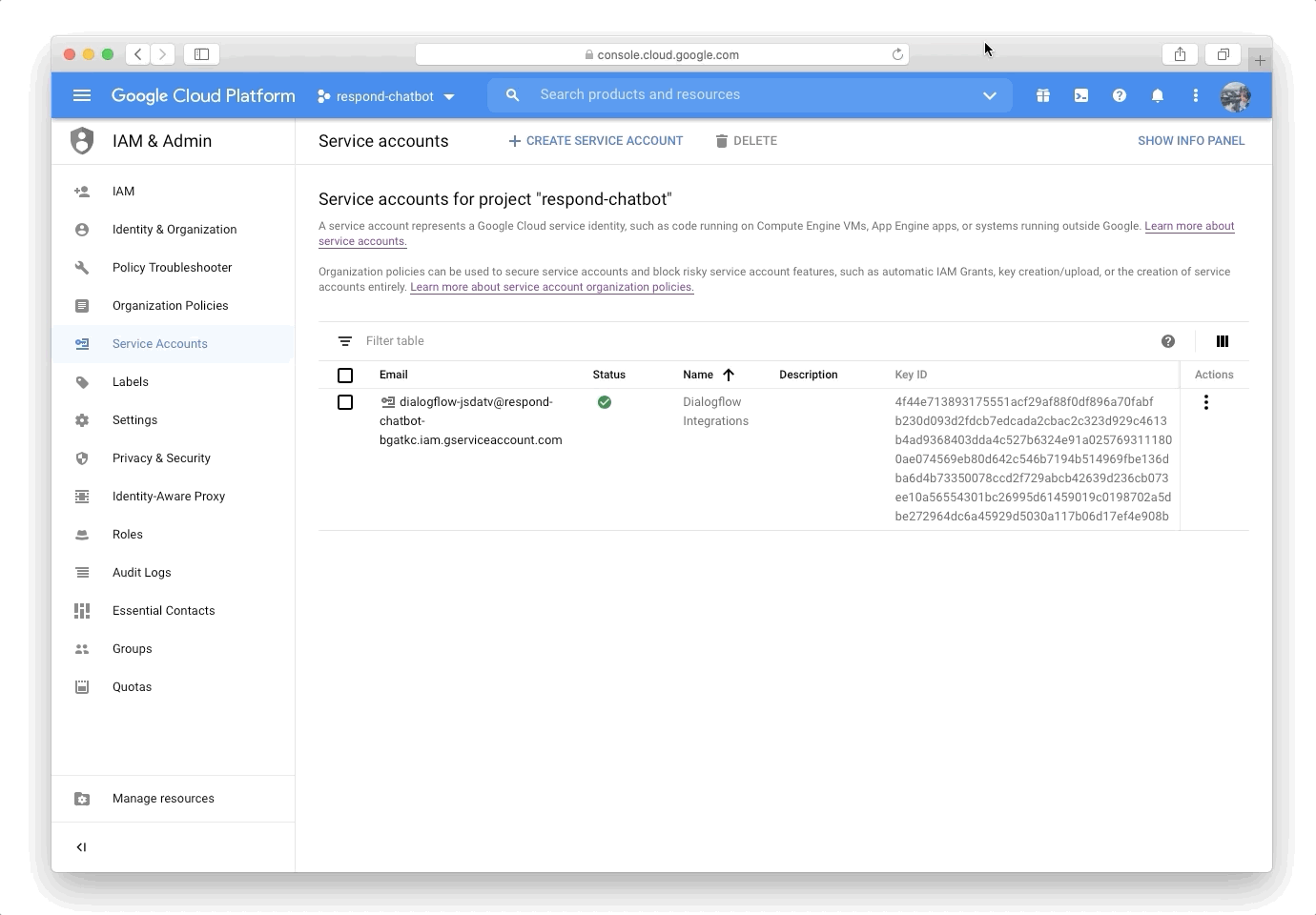
Step 6: In the Service Account Details screen, name the Service Account and click CREATE AND CONTINUE
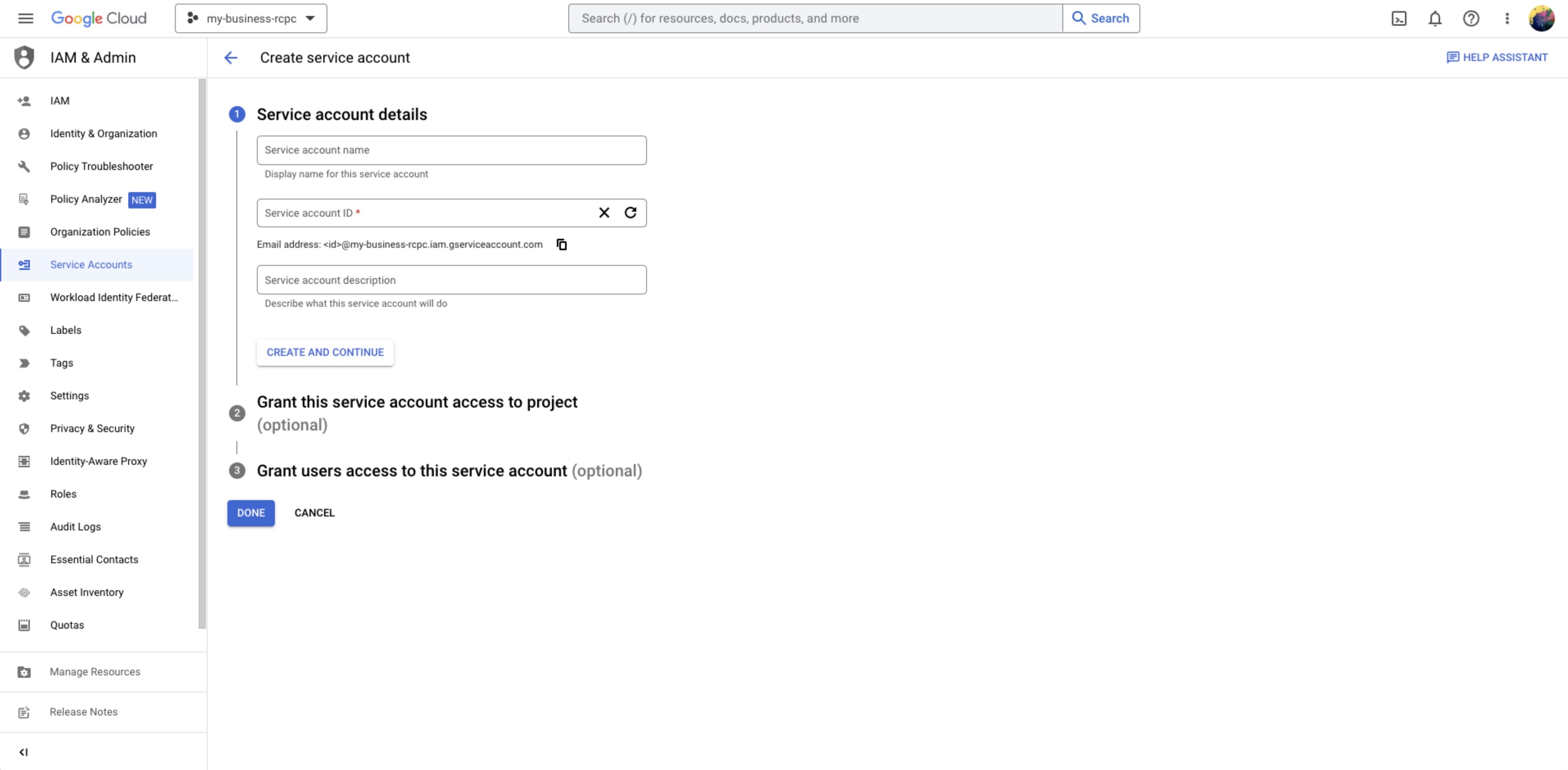
Step 7: Assign the Dialogflow API Client role to the service account > click CONTINUE
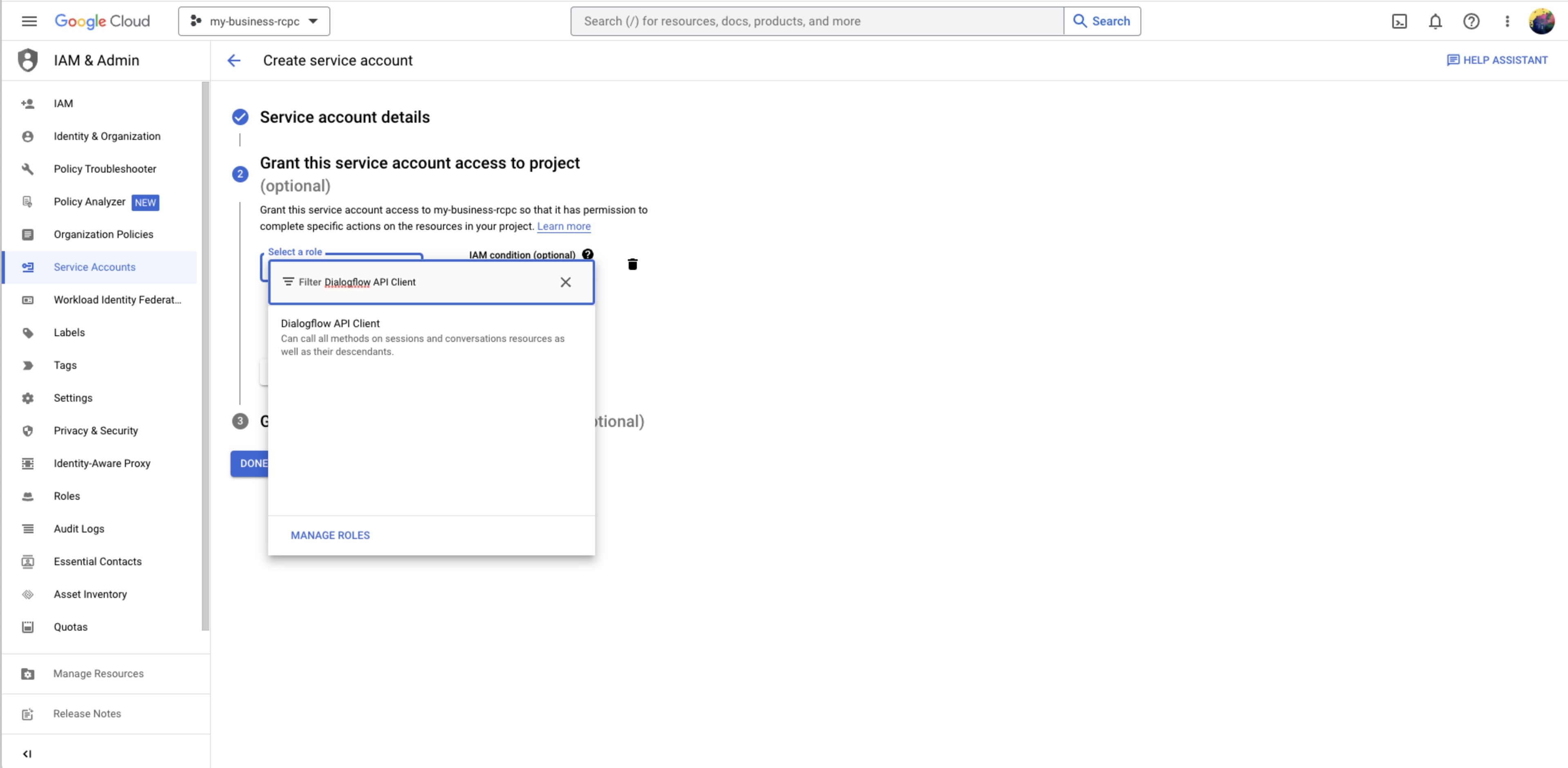
Step 8: The Grant users access to this service account step is optional.
Step 9: Click DONE
Step 10: Locate the previously created Service Account and select Manage Key from the actions menu.

Step 11: In the Keys screen, click ADD KEY > Create new key and select JSON when prompted which format of key is preferred > click CREATE
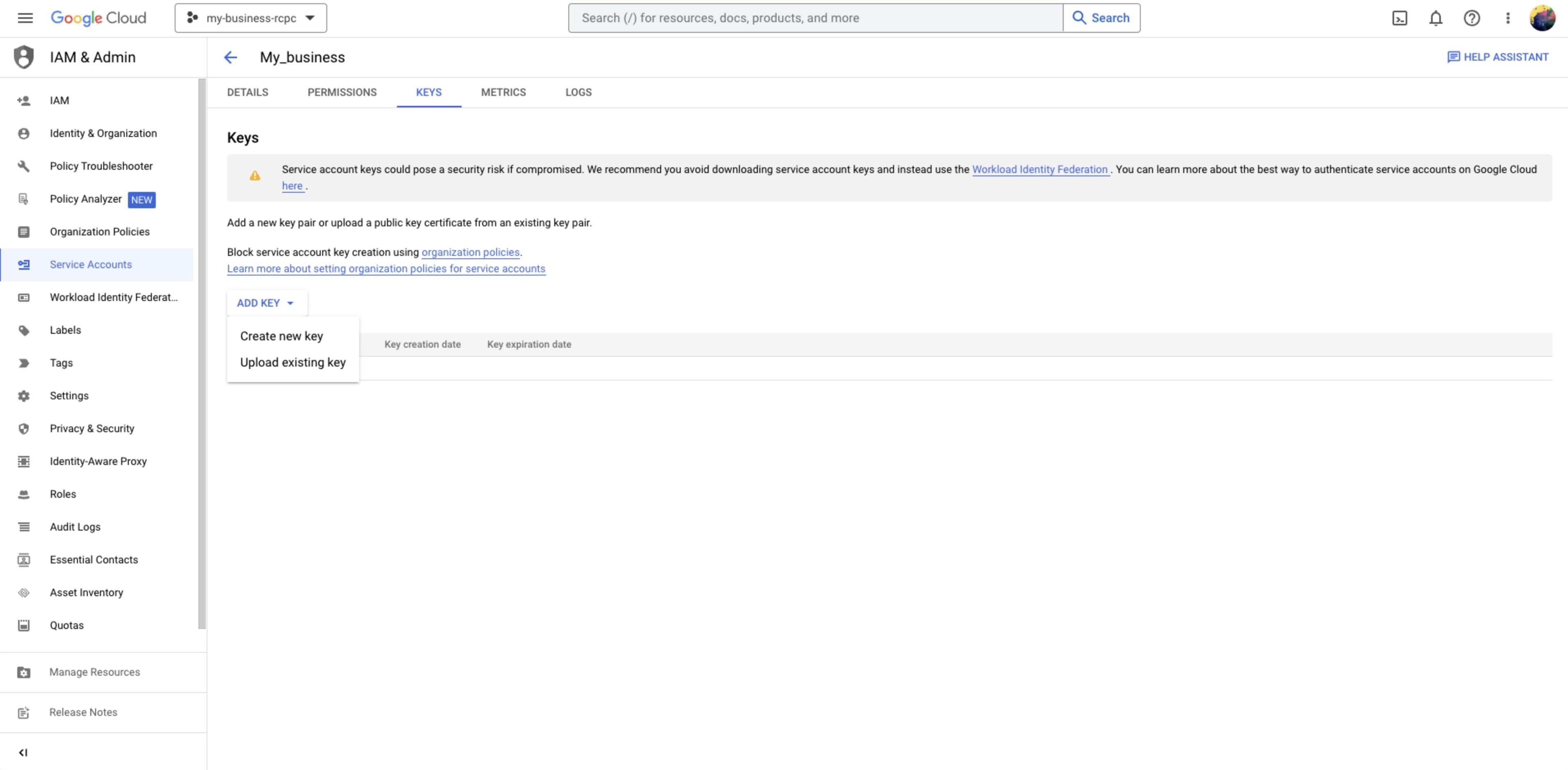
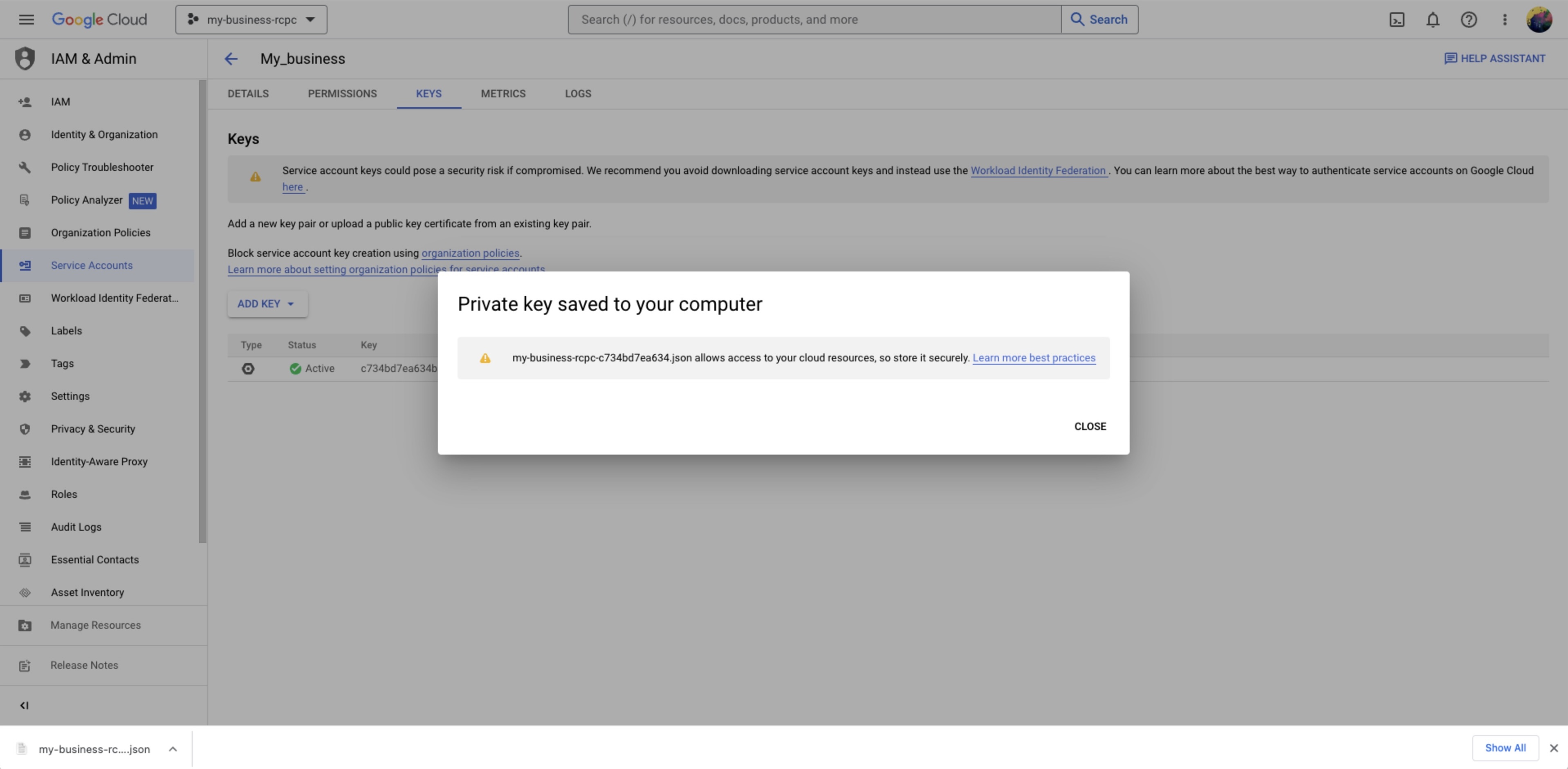
Step 12: Log in to respond.io with your user account and navigate to Settings > Integrations

Step 13: From the list, search for Dialogflow and click Connect.
Step 14: Select the language of your target audience and upload the JSON file downloaded from Step 11.
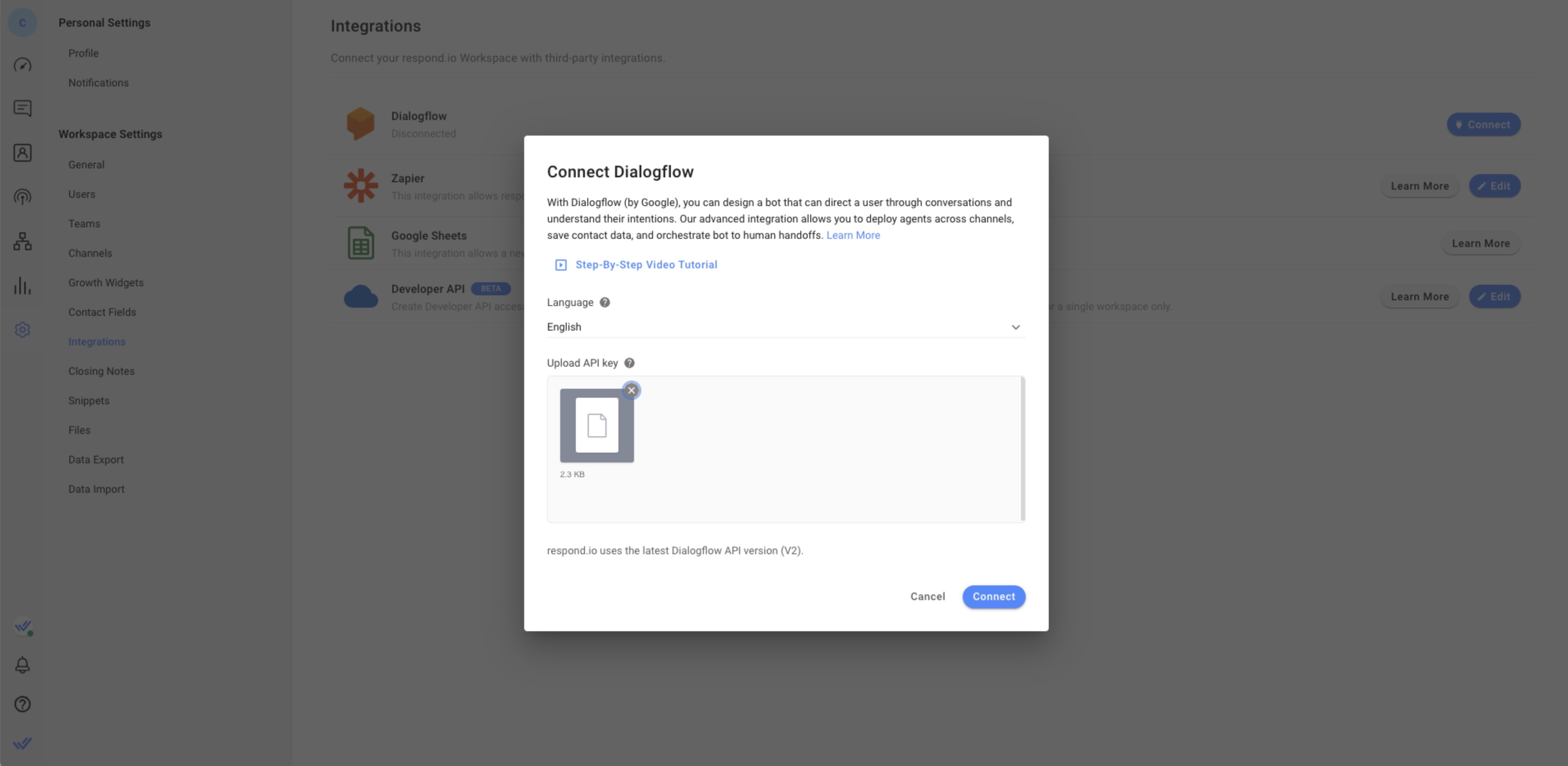
Step 15: Click Connect to connect the Dialogflow Agent to the platform.
Dialogflow Multilingual Agent
When creating an agent in Dialogflow, the language you choose is set as the default language. With the Multilingual Agent feature your agent can now support additional languages.
How Dialogflow Multilingual Agent works in respond.io
The Language Field in the contact’s details on the respond.io platform is used in the request sent to Dialogflow. When a request is sent to Dialogflow, the contact's language will be included and Dialogflow will resolve and respond according to the language value.
Example: If the Contact's Language Field is English, the platform will request an en response and if the Language Field is Spanish the platform will request the es response.
How to Create a Multilingual Agent
To create a Multilingual Agent, follow the steps below.
Step 1: In the left sidebar menu, click the + button to add another language.
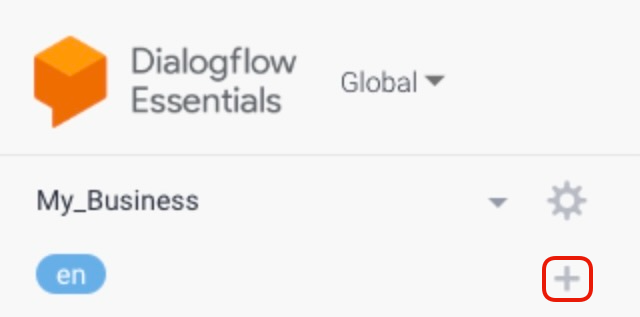
Step 2: In the Languages tab click Select Additional Language and select an additional language from the dropdown menu.
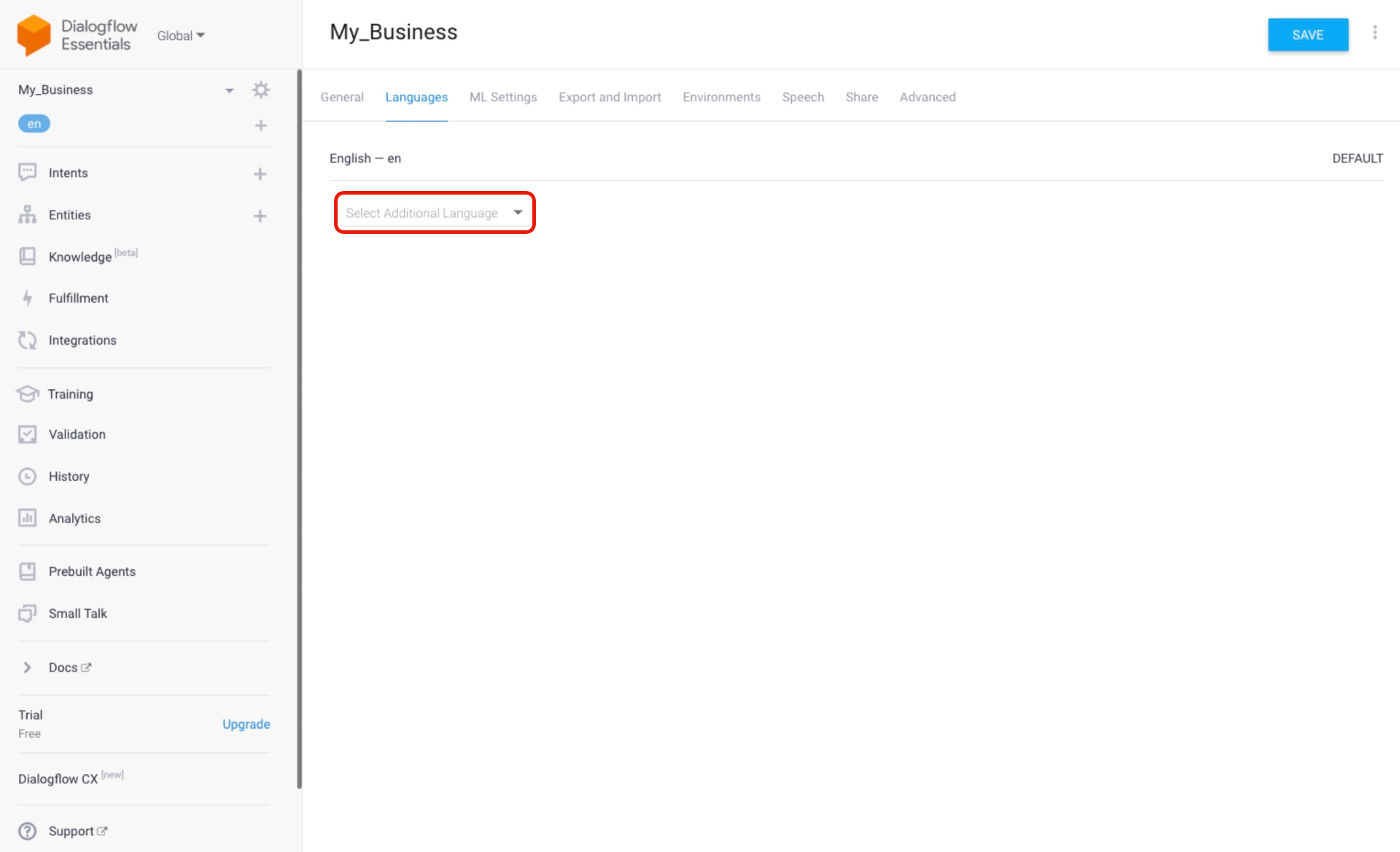
Step 3: To add language localization for a specific region, hover over the language and click + Add locale.
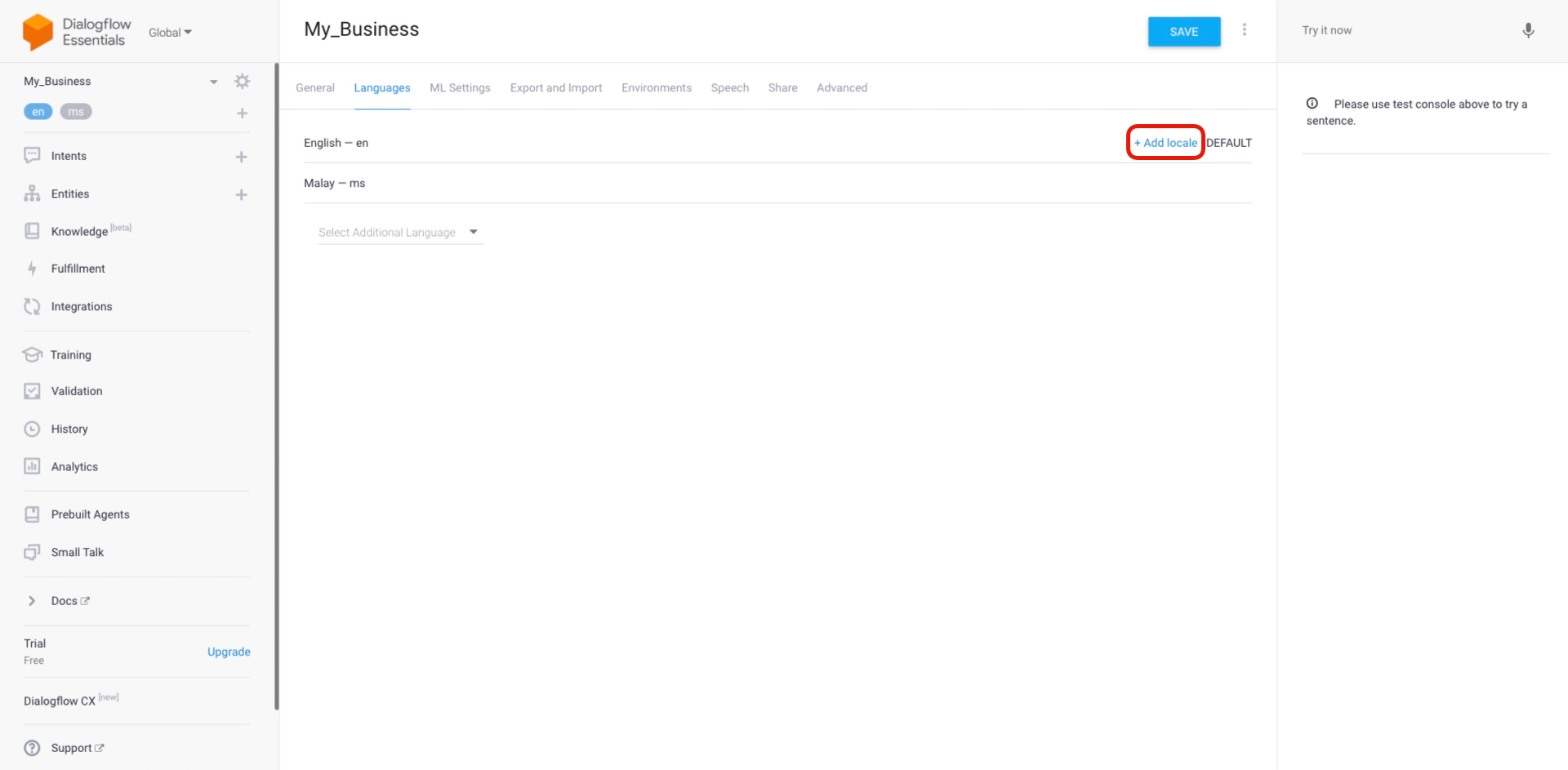
Step 4: Click SAVE
What's next?
The interaction between Dialogflow Agent and Contact is managed by intents. In summary, intents are used to describe the expected behavior for one conversation turn based on the prescribed incoming behavior.
Read more on how to manage intents:
Feeling stuck? Do not fear.
Need assistance? Contact us for support. Help is here!This is the text block that will appear when the button is clicked.
